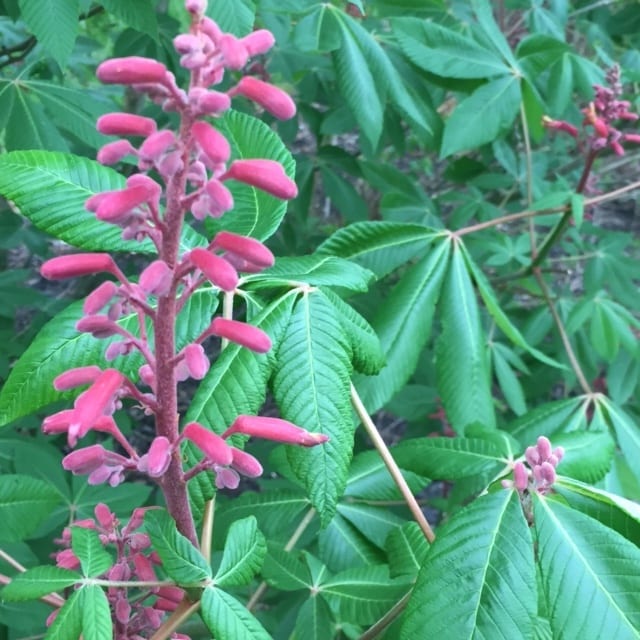Submitted by Faye Mahaffey
OSUE Brown County Master Gardener Volunteer
As I walked around our 5 acres this weekend I realized that I was already making my “wish list” for next spring. My goal is to have a spark of fall color in a few more places. Trees, shrubs, perennials can all provide fall interest in your landscape.
I finally planted the rest of my small trees that had been sitting in pots in my staging area under the carport. Orange flags will hopefully protect them from the dreaded string-trimmer. What did I plant? Two small catalpa trees, Button bush, Elderberry, Hop tree, and Bladdernut. It took me a while to decide just where I wanted to plant them. I have to admit that when I purchased them, I had no clue where they were going. I just wanted to bring them home with me!
Ornamental grasses offer fall and winter color and movement in the landscape. I leave the seed heads for the birds to enjoy through the winter and cut all grasses back in early spring. Next spring Japanese Blood grass is an easy way to add a splash of red to your wind garden. It is not aggressive (at least where I have it planted) and only reaches 12 to 14 inches in height. Pampas grass is a stretch for my zone, but mine seems to be thriving in its protected location. A suggested alternative for Pampas grass is Karl Foerster. Don’t forget about our native grasses! I am slowly replacing the Miscanthus (considered invasive) with Big and Little Bluestem, Indian Grass, Prairie Dropseed and Switchgrass.
Autumn sedum and Joe Pye Weed are also beautiful in the fall and winter. The snow-covered seed heads also provide winter treats for the birds.
I have discovered a few books that will help me with my plans for more fall color in my landscape. 8 Months of Color written by Janet Macunovich provides the reader with an easy way to choose plants by week of peak bloom, color, and height. The plants listed are for USDA hardiness zones 4, 5, 6 and 7. Tracy Disabato-Aust has written a “must have” for all busy gardeners. Her book, 50 High-Impact, Low-Care Garden Plants, proves that low-maintenance doesn’t mean low-interest.
Pam Bennett, co-author of Garden-Pedia: An A-To-Z Guide to Gardening Terms, and contributing writer for the magazine, Ohio Gardener, suggests some gardening tasks for November that include:
- Clean and sharpen tools and lawn mower 2)
- Plant amaryllis and paperwhites for holiday bloom
- Cut fresh greens from your evergreens to be used for holiday decorations and
- Consider purchasing a balled and burlapped living Christmas tree. If you do this, dig the hole for the tree before the ground freezes.
The Bald Cypress tree we planted close to the “deer path” has been surrounded with snow fence to keep rubbing bucks at bay. We have 3 Norway spruce that seem to be the victims each year as the deer travel through our property. Thankfully they haven’t started on any new trees…..yet!
We hope you will join us at our garden seminar on Thursday, November 15 at the Mt. Orab campus of Southern State Community College. Doug Dyer, OSUE Brown County Master Gardener Volunteer, will talk about Poison Hemlock and other invasive weeds. Remember that all seminars are free and open to the public and are held in Room 208 from 7:00 p.m. to 8:00 p.m.
Have you started making your list for next year? Look around and see what spots need more color!
